infra eco logi urbanism - Ryerson | Toronto, ON
EXHIBITION DESIGN AND PRODUCTION

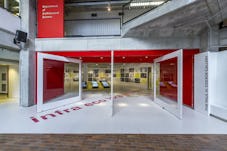
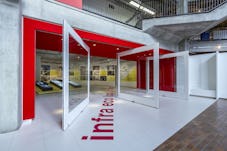
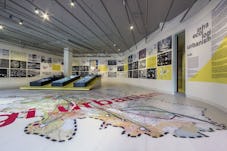
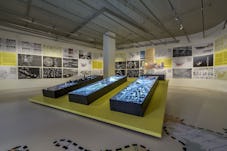
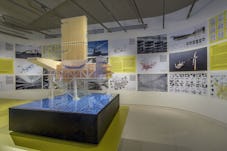

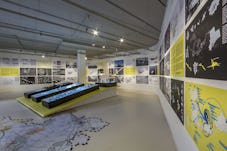
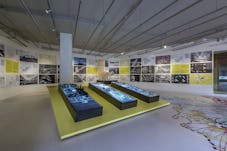
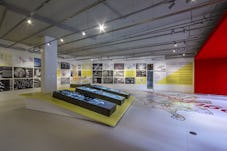
Infra Eco Logi Urbanism is an exhibition that posits a manifesto for architecture at the urban scale within the contemporary post-metropolitan condition. A projected future development for the Great Lakes Megaregion of North America, and developed through our Conduit Urbanism research, is the situational subject within which the design work positions a methodology for urban analysis and design intervention that through specific form aims to address boundaries, governance, politics and public architecture. In aggregate, the exhibition presents a position from which to apprehend megaregional issues, a vision, and a methodology that operates across scales from the regional to the specific, and an event around which to debate regional systems and the role of design in figuring their futures.
The exhibition is organized as a territory. Both its form and content posits an approach to urban design that is not about a singular vision or a grand scheme; rather, proposed is an assemblage of reciprocal relations nested at micro and macro scales of both time and space. The exhibition consists of thirty double-sided panels mounted on illuminated aluminum frames. The content of the panels includes extensive regional cartographies and analyses, drawings of the design of each of the three nodes, historical research, photography, a curated history of related architectural projects and critical writings describing design intent and methodologies.
These are suspended in the exhibition space creating a nonlinear field array, which allows for multiple interrelations, scales and connections to be made by each visitor, from multiple viewpoints and routes. Within the field of panels are also four large scale illuminated models on steel bases: 1:2000 scale models of each nodal site development and a 1:200 sectional fragment model of the nodal design at the Detroit-Windsor Crossing.
Contemporaneous with the duration of the installation, a series of events further allowed the work of to be accessed by a range of constituencies: a week-long student workshop introduced a group of UQAM students of environmental design to the analytical techniques and design methodologies proposed by the authors; the exhibition formed part of Montreal’s “Nuit Blanche” nighttime cultural and artistic festival, during which time over 2000 visitors engaged the work in a single evening; and a public round-table debate assembled architects, planners, political theorists and cultural geographers to discuss questions raised by the propositions embedded in the work.
In curating urban research, we simultaneously curate the next debate across regional frontiers, and invite multiple voices to join in the discussion on possible urban future(s).
| Typology | Exhibition Design and Production |
| date | 2012-2013 |
| location | Toronto, ON |
| scale | 3000 sf |
| scope | Exhibition of Conduit Urbanism project expanded to include comprehensive exhibition of regional analysis and cartographies, agent-based mapping, historical investigation of related architectural and urban works, and urban/architectural design proposals. |
Team
| RVTR | Kathy Velikov, Geoffrey Thün, Colin Ripley. Team: Mary O’Malley, Dan McTavish, Adam Smith, Lisa Sauvé, Charles Gurrey |
other exhibition locations
- Yale University Architecture Gallery, Yale University, New Haven, Connecticut, USA (Sept 28 – Nov 20 2014)
- Taubman College of Architecture and Urban Planning Liberty Gallery University of Michigan, Ann Arbor, Michigan, USA (Jan 28 - Feb 25 2015)
- Centre de Design , Université du Québec à Montréal Montreal, Quebec, Canada (Feb 6 – Apr 15 2013)